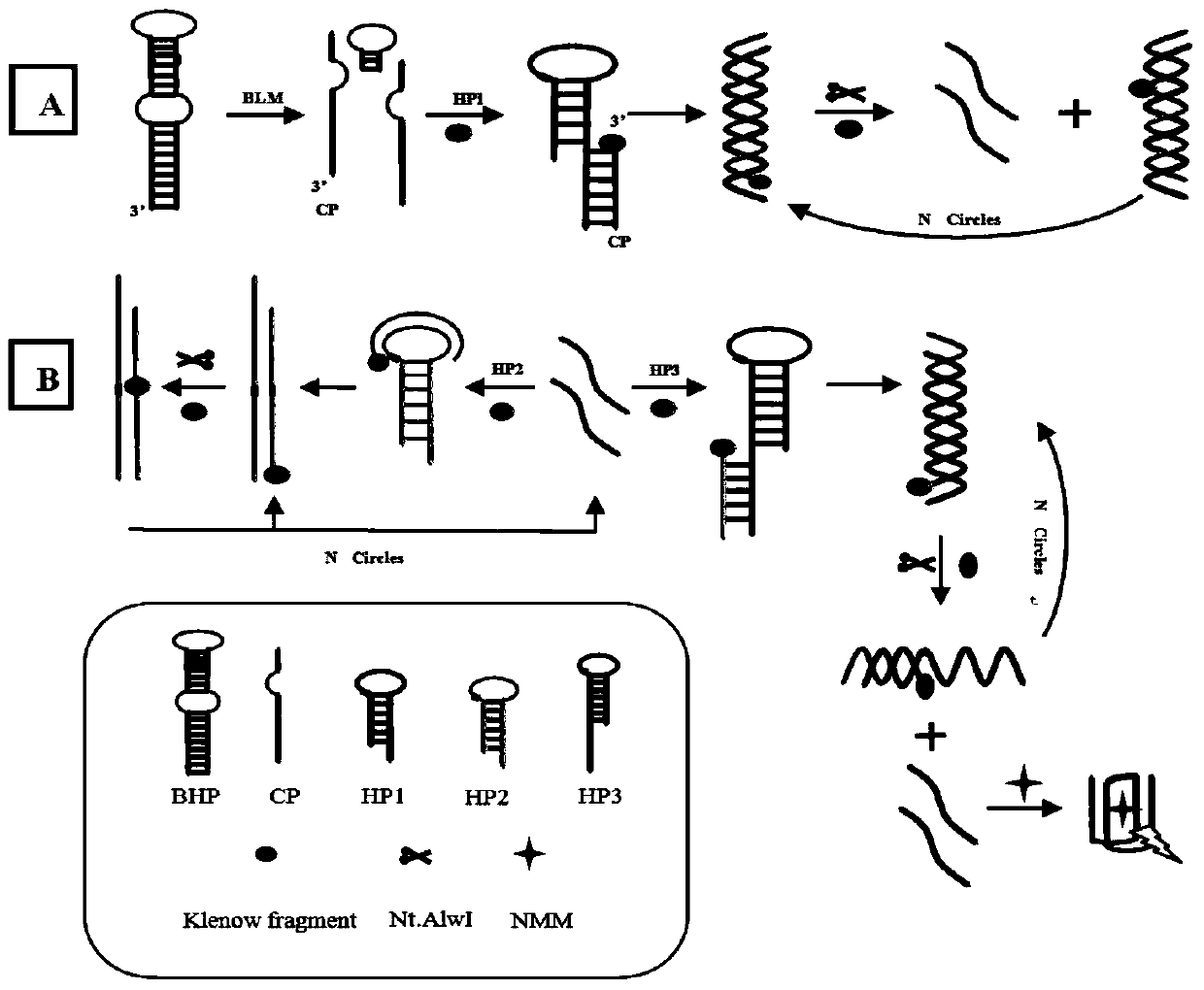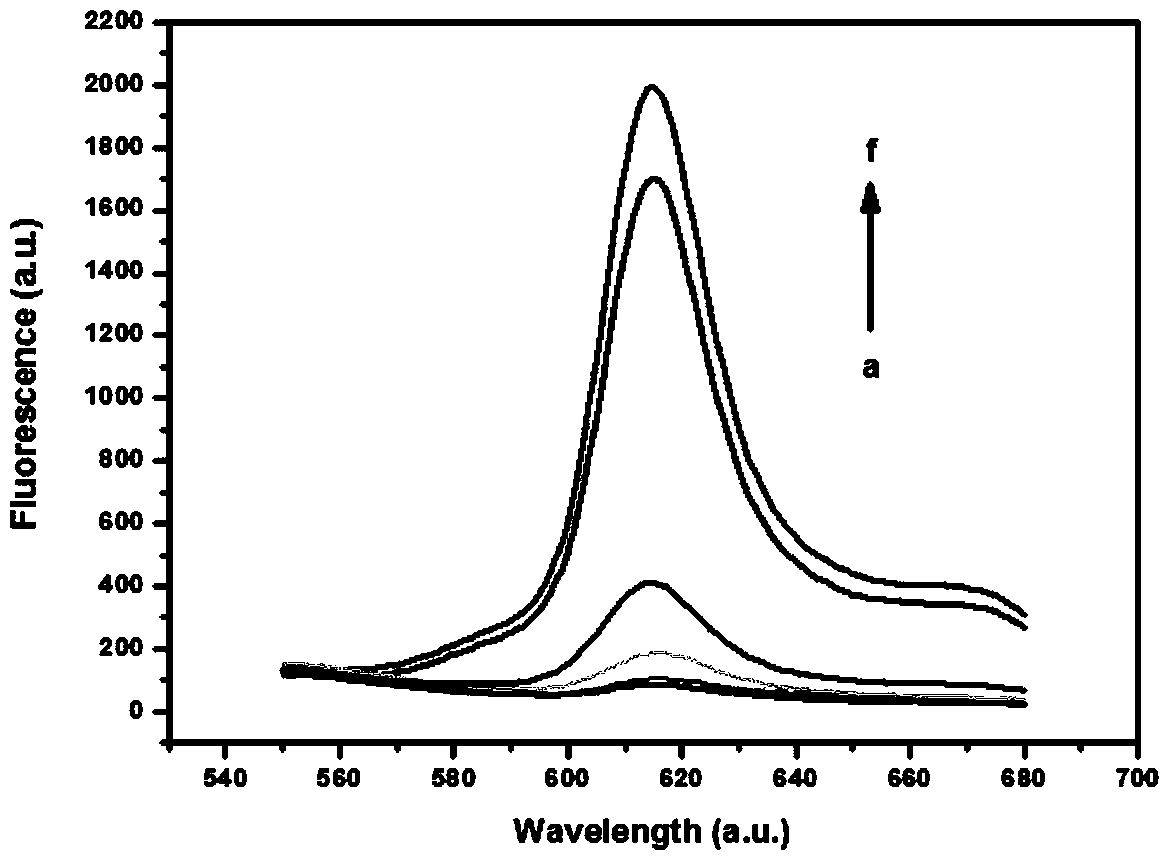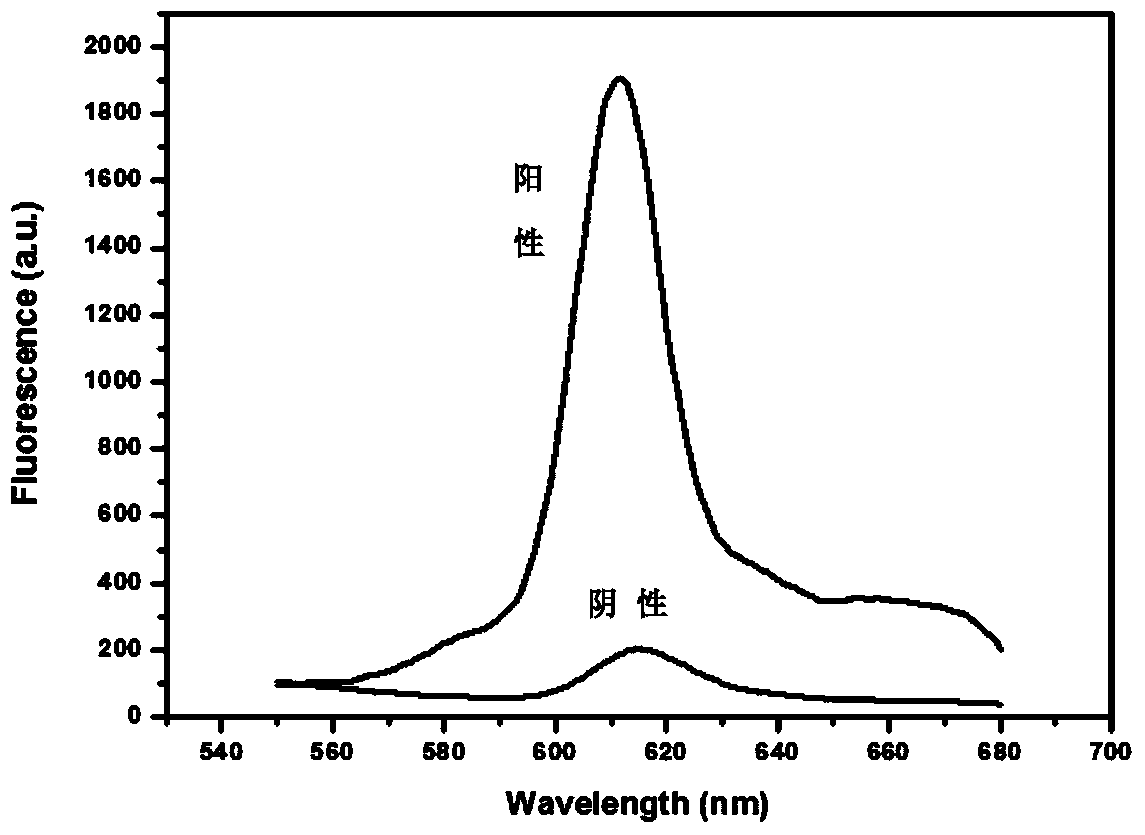Method for detection of bleomycin based on double-circular hairpin probe and enzyme-mediated cascade amplification strategy
A hairpin probe, bleomycin technology, applied in biochemical equipment and methods, microbial determination/inspection, etc., can solve problems such as the inability to meet the requirements of method sensitivity
- Summary
- Abstract
- Description
- Claims
- Application Information
AI Technical Summary
Problems solved by technology
Method used
Image
Examples
Embodiment 1
[0063] Example 1: Detection of bleomycin by double-loop hairpin probe and enzyme-mediated cascade amplification strategy
[0064] The specific method is as follows:
[0065] (1) Bleomycin cut double loop hairpin probe
[0066] Dilute the bicyclic hairpin probe with 15mM PBS, place it in a metal bath at 95°C for 5 minutes, then slowly cool down to about 25°C, take it out, centrifuge, and set aside. Mix bleomycin with freshly prepared ferrous chloride solution at a ratio of 1:1 for activation. The activated bleomycin was fully mixed with the annealed double-loop hairpin probe, and incubated in a 37°C incubator for 30 minutes, so that the bleomycin fully cleaves the double-loop hairpin probe.
[0067] (2) Enzyme-mediated cascade amplification reaction
[0068] After the above reaction is completed, add 1 μL 10mM dNTPs, 1.2 μL template strand HP 1 , 0.6 μL Template Strand HP 2 , 2μL 10×NEBuffer 2 (10mM Tris-HCl, 10mM MgCl 2 , 50mM NaCl, 1.0mM dithiothreitol, pH 7.9) and an app...
Embodiment 2
[0071] Embodiment 2: Feasibility study of detection method of the present invention
[0072] In order to verify the feasibility and amplification capability of the detection method of the present invention, the fluorescence emission spectra of the reaction systems under different conditions were investigated. The result is as figure 2 As shown, the curves a, b and c represent the blank experiments of the three reactions of SDA2, EXPAR+SDA2 and SDA1+EXPAR+SDA2 respectively, and it can be seen that the intensity of the obtained fluorescence signal increases sequentially, indicating that with the increase of the number of amplification reactions, the amplification The background signal of the system is higher, but the fluorescence signal does not exceed 250a.u. Curves d, e, and f represent the positive experiments of the above three amplification reactions respectively, and the fluorescence intensity of curve d has increased to a certain extent compared with curve a, indicating...
Embodiment 3
[0075] Embodiment 3: Optimization of detection conditions
[0076] The present invention selects and optimizes the parameter conditions that have a relatively large impact on the detection performance, including the concentration of the template chain and the reaction time of each stage of the cascade amplification reaction mediated by the enzyme, etc., and conducts an optimization investigation. the result shows:
[0077] template chain HP 2 The optimal concentration is 20nM; template strand HP 3 The optimal concentration is 200nM; the optimal reaction time of stage one (SDA1+EXPAR) and stage two (SDA2) is 30min and 20min, respectively.
PUM
| Property | Measurement | Unit |
|---|---|---|
| correlation coefficient | aaaaa | aaaaa |
Abstract
Description
Claims
Application Information
 Login to View More
Login to View More - R&D
- Intellectual Property
- Life Sciences
- Materials
- Tech Scout
- Unparalleled Data Quality
- Higher Quality Content
- 60% Fewer Hallucinations
Browse by: Latest US Patents, China's latest patents, Technical Efficacy Thesaurus, Application Domain, Technology Topic, Popular Technical Reports.
© 2025 PatSnap. All rights reserved.Legal|Privacy policy|Modern Slavery Act Transparency Statement|Sitemap|About US| Contact US: help@patsnap.com



